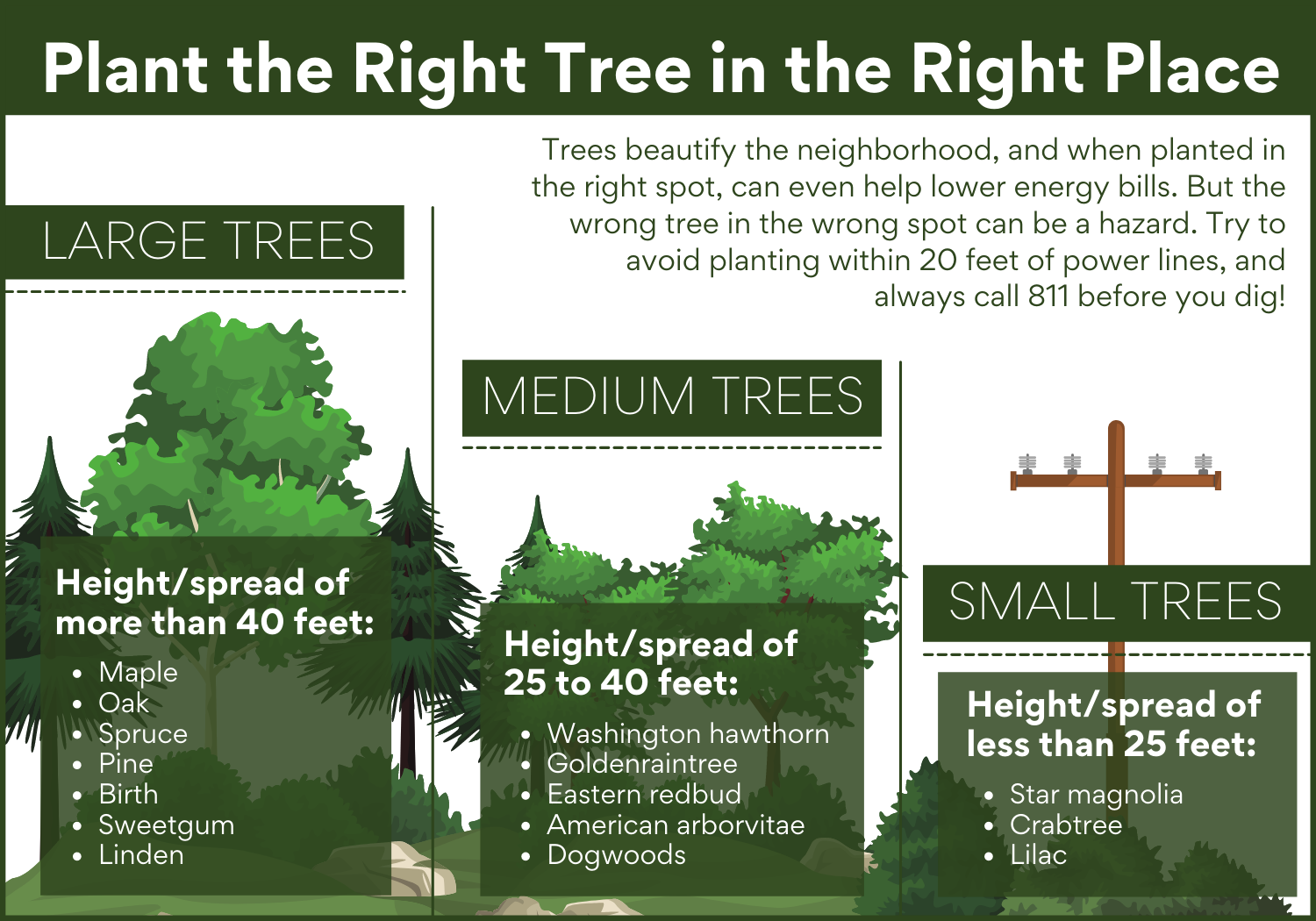Right of Way (ROW) clearing is an important part of system maintenance to ensure we provide safety and reliable electricity to our Members - that’s why Farmers’ Electric Cooperative crews, as well as contractors working for the Cooperative, are clearing the Right-of-Way and conducting vegetation management regularly.
A right-of-way corridor for an electric line is a strip of land that an electric utility uses to construct, maintain, repair, or replace an overhead or underground power line. The corridor allows the utility to provide clearance from trees, buildings, and other structures that could interfere with the line installation, maintenance, and operation. When possible, branches and limbs are just cut back from the lines. But when offending trees are located within 20 feet on either side of the utility line, Farmers’ Electric prefers to remove the tree to eliminate the hazard completely. The graphic illustrates which trees and shrubs are safe and not so safe to plant around utility lines.

